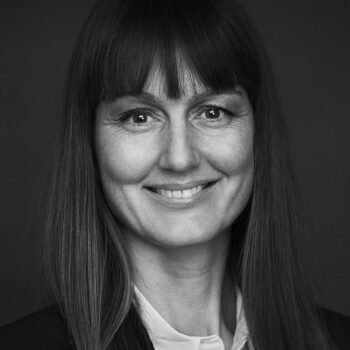In November 2023, the Board of Appeal of Patents and Trademarks (Ankenævnet for Patenter og Varemærker) affirmed the decision of the Danish Patent and Trademark Office, validating the assertion that the READERS. COPENHAGEN trademark was confusingly similar to the trademark *THE READERS.
Consequently, the request for invalidation of the trademark READERS. COPENHAGEN was upheld.
The pivotal factor in the decision rested on the shared characteristic of both trademarks possessing a fairly low degree of distinctiveness, with the prominent use of the word “readers” equally highlighted in each trademark:
 Background of the case
Background of the case
In June 2022 the Respondent, a Spanish eyeglass designer company, filed for invalidation of the national trademark READERS. COPENHAGEN (‘the later mark’) owned by the Complainant, a Danish wholesale company selling eyeglasses. The invalidation was based on the Respondent’s earlier EU trademark *THE READERS (‘the earlier mark’), in which the Respondent claimed that the later mark was confusingly similar to the earlier mark.
In February 2023, after an exchange of correspondence, the Danish Patent and Trademark Office upheld the Respondent’s request for invalidation of the later trademark, based on risk of confusion pursuant to article 15(2) of the Danish Trademark Act.
In particular, the Danish Patent and Trademark Office emphasized that optical goods are a generic term for, among other things, glasses, spectacle frames and sunglasses, as an optician is a professionally trained person who is characterized by manufacturing and/or fitting glasses, including sunglasses.
The Danish Patent and Trademark Office, therefore, found that there was identity between the goods for which the Respondent and the Complainant’s trademarks are registered in class 9.
For a likelihood of confusion to arise between two trademarks, it is essential that both trademarks incorporate one or more distinctive elements. Generic or descriptive elements of trademarks cannot be afforded protection.
Regarding the assessment of distinctiveness, the Danish Patent and Trademark Office determined, among other factors, that even weak elements of a trademark should be considered in the assessment when the overall impression of the trademarks is similar.
With reference to this and the fact that the trademarks relate to identical goods, the Danish Patent and Trademark Office, therefore, found that there was a likelihood of confusion between the earlier trademark and the later trademark.
Appeal
The decision of the Danish Patent and Trademark Office was subsequently appealed to the Board of Appeal of Patents and Trademarks in Denmark by the Complainant.
The Complainant claimed that the marks, despite the fact that they both contain the word ‘READERS’, do not give the same overall impression.
In an overall assessment of the trademarks, the Complainant considered it unlikely that the relevant public will focus only on the word element ‘READERS’ and that the relevant public will easily distinguish between the trademarks at issue and will naturally perceive them as originating from different undertakings.
Based on these observations, the Complainant claimed that there was no likelihood of confusion the earlier trademark and the later trademark.
Conversely, the Respondent argued that there was a risk of confusion between the trademarks.
The Respondent emphasized that when dealing with coinciding goods or services, the criteria for assessing similarity between trademarks were less stringent. Regarding the similarity between the trademarks, the Respondent contended that the non-coinciding word elements “THE” and “COPENHAGEN” lacked distinctiveness. On the other hand, “READERS” was argued to have possessed distinctiveness, albeit to a limited extent, as it required interpretative effort in relation to the relevant goods. Thus, the Respondent posited that the evaluation of the trademarks should primarily focus on the word element “READERS.”
Building upon the aforementioned arguments, the Respondent asserted that the decision of the Danish Patent and Trademark Office should be upheld.
Decision of the Board of Appeal of Patents and Trademarks
The Board of Appeal of Patents and Trademarks agreed with the Danish Patent and Trademark Office, that the term “optical goods”, for which the complainant’s trademark is registered in class 9, must be considered to be a generic term for among others “spectacles, spectacle frames and sunglasses“, for which the respondent’s mark is registered. As there is, therefore, identity between the goods, the Board of Appeal of Patents and Trademarks found that there are less requirements for distinctiveness before likelihood of confusion arises.
As regards the comparison between the trademarks, the Board of Appeal of Patents and Trademarks found that the word element “READERS” is suggestive and thus weak for optical goods, spectacles, etc.,
Consequently, it is crucial to consider the impact of this determination on the overall assessment of whether a likelihood of confusion exists between the trademarks.
The term “READERS” is notably highlighted in both marks, with the word being rendered in a substantially larger font compared to other elements. Additionally, it occupies a central and clearly dominant position in both trademarks.
Given that the other elements in the trademarks are deemed to be at least as weak as the word “READERS” and considering the visually prominent presence of the word ‘READERS’ in both trademarks, resulting in a similar overall impression, the Board of Appeal of Patents and Trademarks asserts that there is a likelihood of confusion.
Based on these circumstances, the Board of Appeal of Patents and Trademarks upheld the decision of the Danish Patent and Trademark Office in respect of the goods in class 9.
The decision aligns with both Danish and EU practices, explicitly stating that:
In cases where trademarks share an element with a low degree of distinctiveness, the evaluation of the likelihood of confusion will focus on the impact of the dissimilar elements on the overall impression of the trademarks.
- Mere coincidence with a component possessing a low degree of distinctiveness typically does not, by itself, give rise to a likelihood of confusion.
- However, the likelihood of confusion may arise if the other components have an equally low or lower degree of distinctiveness, or if they are of negligible visual significance, resulting in a similar overall impression of the trademarks.

